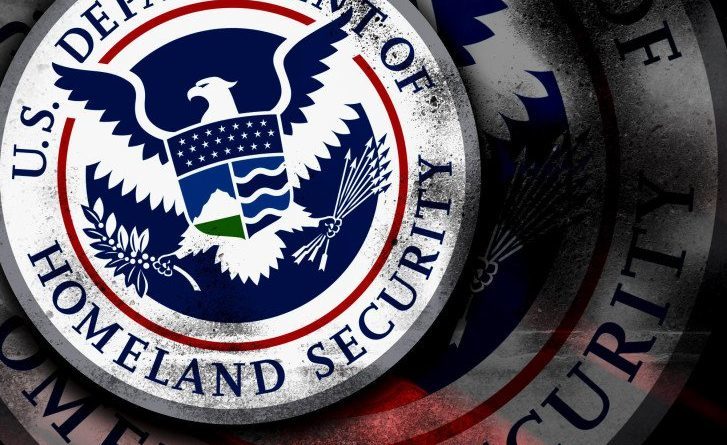US IMMIGRATION: WASHINGTON, USA – 5 top reasons for visa approvals – by Crispin Aranda

THE United States may be the first country most Filipinos want to visit because there are more family members and friends permanently residing there than anywhere else in the world, but Europe gets the greatest number of tourist arrivals from travelers all over.
In 2018, Europe posted 713 million tourist arrivals compared to 217 million in the United States, according to the UN World Travel Organization. Asia and the Pacific hosted 343 million tourists from all over the world. Africa and the Middle East brought up the rear but still managed to attract 67 and 64 million tourists last year, respectively.
.
ADS by Cloud 9:
.
– SPACE RESERVE FOR YOUR ADVERTISEMENT –
.
.
The UNWTO projects continuous growth in tourism till 2030, with 1.3 billion tourists in various destinations, the growth driven mainly by five factors: (1 favorable economic environment; 2) strong outbound demand from major source markets; 3) consolidation of the recovery in key destinations affected by previous crises; 4) enhanced connectivity; and 5) increased visa facilitation.
On the downside, economic slowdown, the uncertainty of Brexit, geopolitical and trade tensions leading to a wait-and-see attitude among investors and travelers could dampen the travel bug.
For tourists, the destination offers more allure than the means to get there, but fear of flying coupled with economic and political developments worldwide could constrain travel plans.
Despite the two tragic air crashes, Boeing would certainly want to get its steel wings back in the air even if it means having to settle forthcoming class action suits from families of the victims and reassuring airlines that Boeing has fixed the software problem which—as the black boxes reveal—apparently caused of the crash.
Still, with 100,000 flights a day worldwide reported by the International Air Transport Association (IATA), flying remains safer than land travel.
..
ADS by Cloud 9:
.
– SPACE RESERVE FOR YOUR ADVERTISEMENT –
.
.
In 2017, IATA says estimated commercial flights were 36.8 million, not including private, business and military aviation. Hence, if non-commercial flights, including unauthorized and non-tracked are included, the total flights yearly come up to about 50 million per year.
The need and want to travel will surely overcome the specter of Boeing’s 737 tragedy.
Unless you are traveling outside of the Asean region, a visa is required for admission in the Asia and Pacific region, including China.
The US admits an average of close to 19 million travelers from Europe, Asia and Africa without visas through the visa waiver program.
As of Jan. 12, 2009, there are 38 visa waiver countries whose nationals may travel to the US without a B-1 (temporary visa for business) or B-2 (temporary visa for pleasure) visa.
Passport holders of a visa-waiver country may travel to and stay in the US for up to 90 days without a visa. However, an approved ESTA travel authorization is still required to visit the US via air or sea, and an online application must be submitted in advance.
..
ADS by Cloud 9:
.
– SPACE RESERVE FOR YOUR ADVERTISEMENT –
.
.
The Philippines is not among the participant-countries.
There was a time when Filipinos did not need visas to travel to the US. From the time the Treaty of Paris was signed where the Philippines was bought from Spain for $20 million, Filipinos were considered US nationals.
Our great grandfathers did not need to travel to the US: the Philippines was America.
Political and economic realities in the US led to the creation of the Philippine Commonwealth and ultimately, the “grant of Philippine Independence” on July 4, 1946.
As citizens of an independent country, Filipinos were subject to admission requirements: travel to the US—temporary or otherwise—requires visas.
.
.
ADS by Cloud 9:
.
– SPACE RESERVE FOR YOUR ADVERTISEMENT –
.
.
B visas
Filipinos and other foreign nationals (not citizens of visa waiver-participating countries) may travel to the US for business or pleasure.
Travelers “consulting with business associates, attending scientific, educational, professional or business conventions/conferences, settling an estate or negotiating contracts” should apply for the B-1 temporary visa for business.
The B-2 visa, on the other hand, is issued to individuals whose purpose to travel to the US is “recreational in nature, involving tourism, visiting friends or relatives, medical treatment and activities of a fraternal, social or service nature.”
An applicant who may be considered by a US consul as someone who can afford to and a potential frequent visitor to the US on either business or pleasure could be issued the B-1/B-2 visa for up to 10 years.
The duration of the visit is determined by the consul although the request on how long to stay in the US is indicated by the visa applicant on the online DS 160 nonimmigrant visa application form.
.
.
ADS by Cloud 9:
.
– SPACE RESERVE FOR YOUR ADVERTISEMENT –
.
.
Qualifications
If you apply for a B-1/B-2 visa, you must demonstrate to a consular officer that you qualify for a US visa in accordance with the US Immigration and Nationality Act (INA). Section 214(b) of the INA which presumes that every B-1/B-2 applicant is an intending immigrant. You must overcome this legally established presumption by showing that the purpose of your trip to the US is for a temporary visit, such as business, pleasure, or medical treatment and that you plan to remain in the US for a specific, limited period of time.
The applicant must provide evidence of funds to cover the expenses while in the United States and most importantly, that the applicant has “a residence outside the US, as well as other binding social or economic ties, that will ensure your return abroad at the end of your visit.”
Essentially, permanent ties are given more weight than the valid and stated reasons for the temporary visit,
It does not help that historically, hundreds of thousands of temporary visitor visas overstay; hence, the TNT tag for overstaying Pinoys. And not just visitor visa holders.
In fact, as of January 2019, the Philippines has been removed from the list of countries whose citizens may apply for temporary work visas – the H-2A (agricultural) and H-2B (non-agricultural) categories.
The immigrant visa allocation remains the same at approximately 26,520 a year in the five major family-sponsored categories and five employment-based classes. But back to the “visit” visas.
.
.
ADS by Cloud 9:
.
– SPACE RESERVE FOR YOUR ADVERTISEMENT –
.
.
Pinoy visitors to the US and elsewhere
Of 181,100,000 persons admitted temporarily in the US under various categories in 2017, the US Department of Homeland Security said 138,789341 were individuals with visas for business and pleasure as well as holders of passports from countries not needing visas (through the visa waiver program) who were still counted as nonimmigrant/temporary visitors.
The number of kababayan visiting the US averaged 393,528 in the three-year period (2015 to 2017), crossing the 400,000 mark in 2016.
When applying for tourist visas to the US, Canada or Europe (Schengen visas), Australia and New Zealand, there are five things to consider to enhance the chance of visa approval.
Valid reason for the visit. You must specify the reason for the intended travel. Avoid generalizations such as “to see your beautiful country” without specifying what part of which state, region or area you intend to visit.
Itinerary of your temporary stay: While the visa application (now online) may not offer sufficient space to indicate the places and persons to visit, you must be ready to provide specifics as to the duration of stay and type of accommodation whether pre-arranged with persons you are staying with or booking with hotels.
Spending money – As a tourist, you must have money to spend for the intended travel and tour. There is no set amount. Consuls would check and verify the history of funds to be used for the itinerary submitted, availability or access to funds from overseas. If you have savings and the cost of the entire journey will clean up your bank account you must have not only a very good reason to travel but also you must have very compelling reasons to return.
Intention to return to the Philippines after completing the purpose of your visit. A person’s family ties in both countries are considered. As a general rule, the longer the duration of the visit and stay in the US, the less likelihood of being granted a visit visa. If you can be absent from work or personal responsibility in the Philippines let’s say for six months, the chances are you do not plan to return. Otherwise, convincing the consul or visa officer of departing from the US, Canada, Europe or Schengen country requires substantial documentation that are independently verifiable.
Truthful, complete and consistent completion of application forms. Whether online or paper form, application forms are the markers that embassies design to separate the genuine visitors from intending immigrants. And a misrepresentation of facts in a visitor visa application can come back to haunt your immigrant visa application in the future.
These five factors considered by interviewing or assessing officer could be summed up by combining the first letters of each criteria: check out the first letters of all five reasons and they spell out the purpose of your application – VISIT.
.
.
ADS by Cloud 9:
.
– SPACE RESERVE FOR YOUR ADVERTISEMENT –
.
.
.


 All photographs, news, editorials, opinions, information, data, others have been taken from the Internet ..aseanews.net |
All photographs, news, editorials, opinions, information, data, others have been taken from the Internet ..aseanews.net | 






